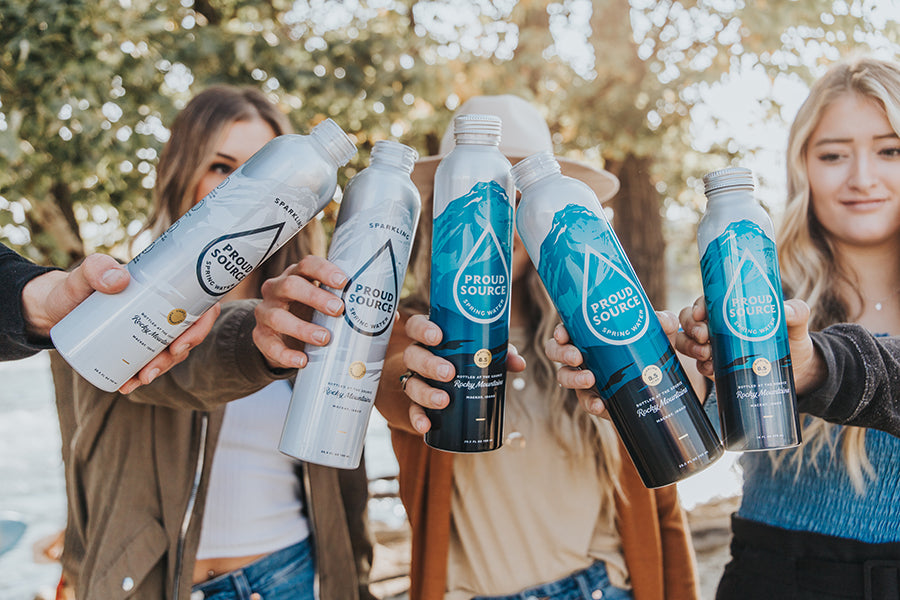Your cart is empty

Whether we realize it or not, water is an essential part of our everyday lives and overall health. Our bodies are made up of 70% water, so it’s vital that we stay hydrated and continue to replenish our bodies throughout the day. Not only does water help increase energy levels and brain function, but it also aids in skin health, blood pressure maintenance, and much more. The health benefits of water are virtually endless.

Water is a finite resource that millions of people don’t have access to.
(Photo Credit: Enterprise News)
The only problem? Water is a finite resource that not everyone can access equally.
According to the United Nations, approximately 700 million people in 43 countries suffer from water scarcity. It’s estimated that by 2025, that number will increase to 1.8 billion, with an additional two-thirds of the Earth living under water-stressed conditions. This rising global water crisis can be attributed to climate change, increased human demand, and pollution.
As humans continue to produce more carbon dioxide and other greenhouse gases, weather patterns will begin to change rapidly. While some regions of the world will flood, others will experience severe drought. Glaciers, which contain a majority of the Earth’s freshwater supply, will melt and become unfit to drink when the water makes contact with the surrounding saltwater.

The Aral Sea, once a critical source of drinking water for local populations, has lost an area the size of Lake Michigan in the last 30 years.
(Photo Credit: NASA Earth Observatory)
Many landscapes will be drastically affected by climate change, thereby depleting adequate access to water. In central Asia, the Aral Sea was once among the largest freshwater lakes in the world, providing clean drinking water for the nearby population. However, in the last 30 years, the Aral Sea has lost an area the size of Lake Michigan. This shortage of freshwater has led to food and water shortages and contributed to the high infant mortality rate in this region of the world.
The human population has more than doubled in the last 50 years. With this exponential growth comes a higher demand for freshwater to meet sanitation, hydration, and agricultural needs. According to the World Wildlife Fund, 41% of the world’s population lives in river basins that are currently experiencing water stress. If water continues to be used at its current unsustainable rate, the earth could begin experiencing a worldwide water shortage in as little as ten years.
As temperatures continue to climb as a result of climate change, so does the demand for freshwater. 45% of the freshwater supply in the United States is used for thermoelectric power, while an additional 32% is applied toward irrigation and agriculture. Both plants and humans will require more water as temperatures and populations steadily rise.
Water pollution is one of the greatest threats to survival as we know it. Some of the most common pollutants that infiltrate water include pesticides and fertilizers, untreated human waste, and industrial waste that has been dumped into rivers and streams. Once these pollutants enter the water cycle, it is extremely difficult to extract them. If not properly treated, these contaminants can make their way into the water we drink and the places we swim.

One of the most famous examples of water pollution in the United States is the water crisis in Flint, Michigan. However, Michigan isn’t the only part of the U.S. with contaminated drinking water. In a 2017 investigation performed by Orb Media, scores of tap water samples from twelve different nations were analyzed and tested for contaminants.
The final results showed that an alarming 83% of the tap water sampled contained microplastics, or tiny pieces of plastic that may not be visible to the naked eye. The U.S. had the highest contamination rate at 94%, while other European nations, including the UK, Germany, and France, had rates closer to 72%.
There are many ways you can conserve water in your own life through small, simple actions. Below is a short list of things you can do to help limit the amount of water you use in your home:

The average American shower uses over 15 gallons of water with an average rate of 2 gallons per minute.
(Photo Credit: Smart Water Magazine)
Every individual on the planet depends on water for their livelihood, and we cannot live without it. By making small changes in our lives to ensure pure, clean water, we can help decrease the likelihood of water shortages and improve the quality of Earth’s most valuable element.